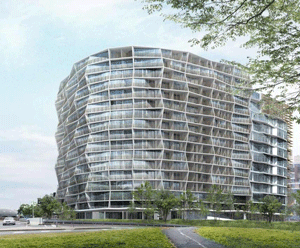Climate Change puts green ban on servers

Australia's Climate Change department is sending its data off-site to achieve the green targets it has set for its new office accommodation in Canberra, the Nishi Building which is currently under construction and due for completion in October 2012
The department is moving to a building promoted as "Canberra's most sustainable mixed-use building complex". however it is being forced to locate its servers, the powerful computers that drive its office applications, in an off-site data centre.
In tender documents issued last week, the department notes: "The impact of this green intent on Information Technology (IT) is there is a limited energy budget available to power hardware.
“To assist in achieving the energy rating required for the building, servers will not be located in the Nishi Building, but will instead be located away in commercial data centre facilities. Data communications to the servers, as well as to other property in the portfolio, is provided through the ICON fibre optic network."
In other words, the department is housing its power-hungry servers in another location just to achieve its green targets. Because the data is sent over a fibre optic network, it uses 'nice' energy friendly photons, rather than nasty power hungry electrons.
So out of sight, out of mind. The energy is still consumed, but as long as its not on the Nishi Building balance sheet, that's allright.
According the building’s developers, Molonglo Group ““Nishi is an building for the environmental age. It will use 50% less energy and produce 40% less carbon emission than the highest 5 Star NABERS rated building.
“The building on completion, in late 2012 will house the largest single building-installed solar panel array in Australia and one of the largest forestry sustainable timber façade systems, embracing the idea of using low embodied building materials.”
The Nishi networking tender was published in the same week that the Climate Change department announced intentions to slash a third of its staff, allegedly one-third of the 900 jobs. However, the tender calls for 1480 fixed network access points and a wireless N network to be available throughout the 6-level facility, so there is scope for considerable growth in staffing in the future.
